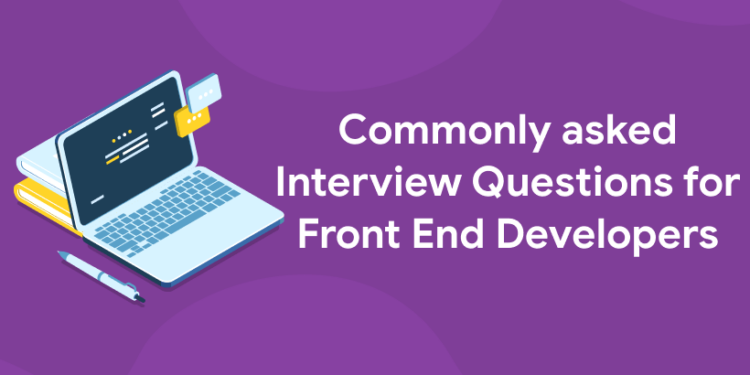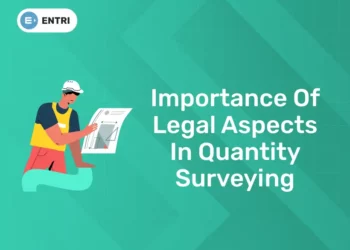Table of Contents
Frontend Developers are in high demand right now. Many organizations are eager to hire them and provide excellent compensation packages. If you feel you have the ability to become a front-end developer and want to pursue a career in this field, you’ve come to the correct spot. This Frontend Developer Interview Questions guide will help you ace your next interview. This Frontend Developer Interview Questions lesson covers questions on several frontend development languages and frameworks. Front-end development is the process of creating websites and user interfaces for online applications. Front-end developers provide the structure, design, behavior, and animation that you see when you access websites, online applications, or mobile apps.
Get the latest update on front end developer interview questions in the Entri app
Interview Questions for Front End Developers
What is a ‘Version Control System’?
A version control system (VCS) is a program that records any changes made to a file or group of data so that it may be restored to an earlier version if necessary. This ensures that everyone on the team is working with the most recent version of the file.
Differentiate Between Centralized and Distributed Version Control Systems
In a centralized version control system, this would be:
All file versions are saved on a central server.
No developer has a complete copy of the files on the local system.
You will lose all project data if the project’s central server crashes.
In a Version Control System (DVCS):
On their PC, each developer has a copy of all code versions.
Improves offline capability and eliminates the necessity for a single backup site.
There is no danger even if the server fails.
Explain Git Push and Git Pull
Git push is a command that transfers the contents of a local repository to another. After changing a local repository, it does a push to share the changes with distant team members. Git pull retrieves changes from a remote repository and merges them into the local repository. It consists of two commands: git fetch and git merge.
Get the latest update on front end developer interview questions in the Entri app
Explain the Difference Between Git Pull and Git Fetch
Git Fetch
Using Git fetch, it only downloads fresh data from a remote repository.
This new information is not included in your working files.
Run Git fetch at any time to update the remote-tracking branches.
git fetch origin is a command.
—all git fetch
Git Pull
Git retrieves new data and merges it with the existing working files, updating the current HEAD branch with the most recent changes from the remote server.
It aims to blend remote and local adjustments.
git pull origin master is a command.
What is a Merge Conflict in Git and how can it be resolved?
When merging branches with conflicting contributions, a merge conflict develops, and Git need your assistance in deciding which changes to include in the final merge. Use the GitHub dispute editor to resolve the issue.
This is done to avoid merging conflicts while vying for line changes, i.e. when users make different edits to the same line of the same file on separate branches in your Git repository.
Step 1: Click Pull requests under your repository’s name.
Step 2: In the “Pull Requests” list, choose the pull request containing the merge conflict you want to resolve. Near the bottom of your pull request, click Resolve conflicts.
Step 3: Determine whether you want to keep simply your branch’s modifications, only the changes of the other branch, or build an entirely new update that contains both branches’ changes.
Step 4: Remove the conflict marks and make the desired modifications in the final merge.
Step 5: If you have more than one merge conflict in your file, scroll down to the next set of conflict markers and repeat steps four and five to fix the issue. Once you’ve resolved all of the conflicts, mark the file as resolved.
Step 6: If you have more than one conflicting file, go to the left side of the page and choose the next file to edit under “conflicting files.” Then, repeat the preceding steps until all merge conflicts in your pull request have been resolved.
Step 7: Once you’ve addressed all of your merge conflicts, click Commit merge. As a consequence, it combines the whole base branch into your head branch. To merge your pull requests, click Merge pull request.
Resolve the issue by cloning the repository locally and committing the update to your GitHub branch.
Get the latest update on front end developer interview questions in the Entri app
Differentiate Between Git Merge and Git Rebase
Assume you’re working on a new feature on a separate branch while another team member commits to the master branch. Merge is a command that is used to merge new commits into your feature branch. Every time you need to include changes, you must make an additional merging commit. It taints your feature branch’s history. Instead of merging, you can rebase the feature branch into a master. This includes all new commits to the master branch. It also rewrites the project history by adding new commits for each commit in the original branch.
What is Content Security Policy?
The Content Security Policy (CSP) is an HTTP header that gives site owners fine-grained control over where their site’s resources can be loaded from. Using this header is the most effective way to avoid cross-site scripting (XSS) vulnerabilities. Because retrofitting CSP into existing websites is challenging, CSP is required for all new websites and strongly recommended for all existing high-risk sites.
The fundamental advantage of CSP is that it prevents the usage of dangerous inline JavaScript. Inline JavaScript, whether reflected or saved, implies that incorrectly escaped user inputs can yield code that the web browser interprets as JavaScript. You may successfully remove virtually all XSS attacks against your site by utilizing CSP to block inline JavaScript.
What is Cross-Site Scripting (XSS)?
Cross-Site Scripting (XSS) is an attack that happens when an attacker uses an online application to transmit malicious code to a separate end user, typically in the form of a browser-side script. The server’s response page is unmodified when someone requests it. An XSS attack, on the other hand, takes use of a flaw in a website that allows a variable supplied in a request to appear in raw form in the response. The page just displays what was submitted in that request.
Get the latest update on interview questions and answers for front end developer in the Entri app
What is User-Centered Design?
User-centered design is an iterative design method in which designers concentrate on the users and their demands throughout the design process. UCD advocates incorporating consumers throughout the design process using a range of research and design methodologies in order to develop products that are highly useable and accessible to them. To create a knowledge of user requirements, user-centered design requires designers to utilize a combination of investigative (e.g., surveys and interviews) and generative (e.g., brainstorming) approaches and tools.
How does concurrency work in Node.js?
The thing with node.js is that everything but your code runs simultaneously. That is, there are many threads operating within the Node.js virtual machine (or a thread pool if you like), and those threads are used anytime you execute an async function such as performing i/o operations on files, accessing databases, requesting urls, and so on. Your code, on the other hand, has only one thread that processes events from an event queue. So, when you register a callback, its reference is transferred to the background worker thread, and after the async operation is completed, a new event with that callback is added to the event queue. When Node receives an I/O request, it creates or utilizes a thread to complete the I/O operation and then pushes the result to the event queue. On each such event, the event loop runs and checks the queue; if the execution stack of Node is empty, the queue result is added to the execution stack. Node handles parallelism in this manner.
Mention what is the difference between PUT and POST.
PUT places a file or resource at a certain URI and only at that URI. If there is already a file or resource at that URI, PUT overwrites it. If there is no resource or file, PUT creates one. POST delivers data to a certain URI and anticipates that the resource at that URI will handle the request. At this point, the web server can determine what to do with the data in the context of the chosen resource. PUT is idempotent, which means that executing it several times has no effect on resources. POST, on the other hand, is not idempotent, which means that if you use it numerous times, it keeps producing new resources.
Get the latest update on interview questions and answers for front end developer in the Entri app
What is ClickJacking?
ClickJacking is a type of attack that tricks users into thinking they are clicking on one thing while they are actually clicking on something else. HTML frames make the assault possible (iframes). Its alternative name, user interface (UI) redressing, more accurately defines what is happening. Users believe they are using the standard UI of a web page, but there is a concealed UI in control; in other words, the UI has been redressed. When consumers click something they believe is safe, the hidden UI takes an unexpected action.
What’s the difference between resetting and normalizing CSS? Which would you choose, and why?
When would you use AngularJS vs jQuery?
jQuery – is a DOM manipulation framework – that has nothing to do with models – lacks a two-way binding capability – becomes complicated and difficult to manage as project size grows – Sometimes additional code is required to get the same functionality as in Angular.
Angular – is an MVVM Framework – Used for developing SPA (Single Page Applications) – Has important features like as routing, directives, two-way data binding, models, dependency injection, unit tests, and so on – is modular – maintainable as project size grows – is fast, and so on.
Basically, jQuery is a single tool (it handles one specific problem: dom-manipulation), but AngularJS is a toolbox full of solutions for many situations (routing, model bindings, dom manipulation, etc.).
Get the latest update on interview questions and answers for front end developer in the Entri app
Name some basic design elements
Design components include:
LINE – The line generated by a pen or brush, or the edge formed when two forms meet.
A shape is a self-contained defined region of geometric (squares and circles) or biological material (free formed shapes or natural shapes). A positive form generates a negative shape by itself.
DIRECTION – Every line has a direction, either horizontal, vertical, or oblique. Horizontal implies peace, steadiness, and quiet. Vertical conveys a sense of equilibrium, formality, and attention. Oblique implies movement and action.
SIZE – Size is simply the relationship of one shape’s area to that of another.
TEXTURE – Texture is a shape’s surface characteristics – rough, smooth, soft, hard, shiny, and so on.
COLOUR – Colour is light reflected off objects. Color has three main characteristics: hue or its name (red, green, blue, etc.), value (how light or dark it is), and intensity
What npm is used for?
Node Package Manager is abbreviated as npm. npm offers the following two major features:
Online Node.js package/module repositories searchable at search.nodejs.org
A command-line program for installing Node.js packages, managing their versions, and managing their dependencies.
Another key application of npm is dependency management. If you have a node project with a package.json file, you can use npm install from the project root to install all of the dependencies indicated in the package. json.
Get the latest update on web development in the Entri app
What are the advantages of REST web services?
Some of the benefits of REST web services include:
The learning curve is low because it is based on the HTTP protocol.
Text, XML, JSON, picture, and other data transport methods are supported.
Because there is no contract between the server and the client, the implementation is loosely connected.
REST is a simple protocol.
REST methods are simple to test in a browser.
Differentiate Between Centralized and Distributed Version Control Systems
In a centralized version control system, this would be:
All file versions are saved on a central server.
No developer has a complete copy of the files on the local system.
You will lose all project data if the project’s central server crashes.
In a Version Control System (DVCS):
On their PC, each developer has a copy of all code versions.
Improves offline capability and eliminates the necessity for a single backup site.
There is no danger even if the server fails.
If you are interested to learn new coding skills, the Entri app will help you to acquire them very easily. Entri app is following a structural study plan so that the students can learn very easily. If you don’t have a coding background, it won’t be a problem. You can download the Entri app from the google play store and enroll in your favorite course.











